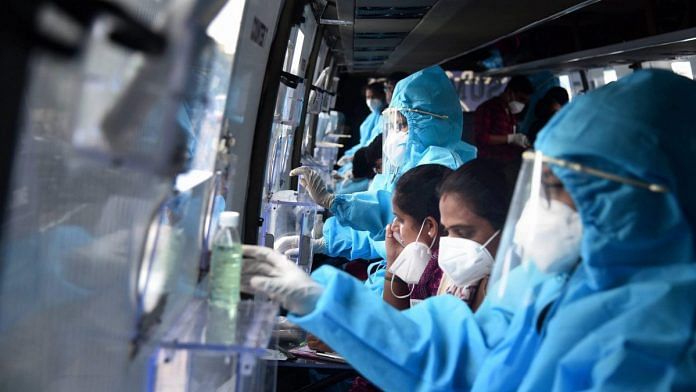Hyderabad: The Delta variant of the coronavirus is behind the deadly second wave of the pandemic in India, CSIR-Centre for Cellular and Molecular Biology (CCMB) and Banaras Hindu University (BHU) Friday said, adding that they traced at least seven major strains of the Covid-19 circulating in Varanasi and its adjoining areas.
The B.1.617.2 variant (Delta variant), which is predominant in the country, was the most common in the samples sequenced.
Of the 130 samples genome sequenced for the study, the Delta variant was found among 36 per cent of the total samples. The B.1.351 variant, first detected in South Africa, was also found in the area, according to a statement from CCMB.
“Among the variants of concern (VoC), the most predominant variant we found in our study was B.1.617. This variant was also reported to be one of the major drivers of the second Covid-19 wave in India,” Prof Royana Singh, who heads the Multidisciplinary Research Unit at BHU, said.
Also read: Delta or B1.617.2 variant of Covid now dominant in UK, comes with risk of hospitalisation
Delta variant most prevalent in India
According to CCMB advisor, Rakesh Mishra, the Delta variant, which is the variant of the B.1.617 lineage, was the most common in the samples, proving that it is the most widespread coronavirus variant in the country right now.
“The Delta Variant is a very strong one; it is not easy for other variants to dominate or replace it so easily. That being said, the caution to keep an eye out for other emerging variants will always hold to prevent another unprecedented surge of cases. In the study… there were no unusual variants found,” the former CCMB director told ThePrint.
The Multidisciplinary Research Unit at BHU collected samples from Varanasi and areas around the city, mostly in April 2021. The team at CCMB sequenced these samples, the statement said.
In a recent study conducted by institutions of the Indian SARS-CoV-2 Genome Sequencing Consortia (INSACOG), which included participation of 10 national laboratories, the proportion of community samples positive for B.1.617 and sub lineages was the highest in Uttar Pradesh at 81.8 per cent, followed by Gujarat at 77.4 per cent and Jharkhand at 67.2 per cent.
About 22 community samples were sequenced in UP, while 438 and 363 samples were sequenced in Gujarat and Jharkhand, according to the report from 28 May.
The report also said that early data shows B.1.617.2 has higher transmission advantages over the other two sub-lineages — B.1.617.1 and B.1.617.3.
(Edited by Manasa Mohan)
Also read: Only one strain of B.1.617 Covid variant first detected in India now a concern, says WHO



